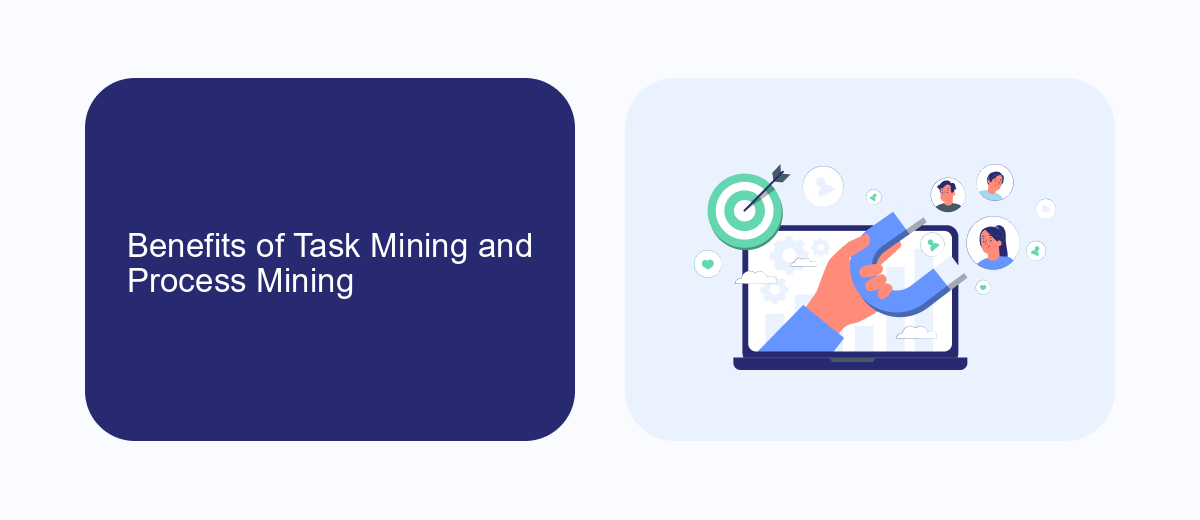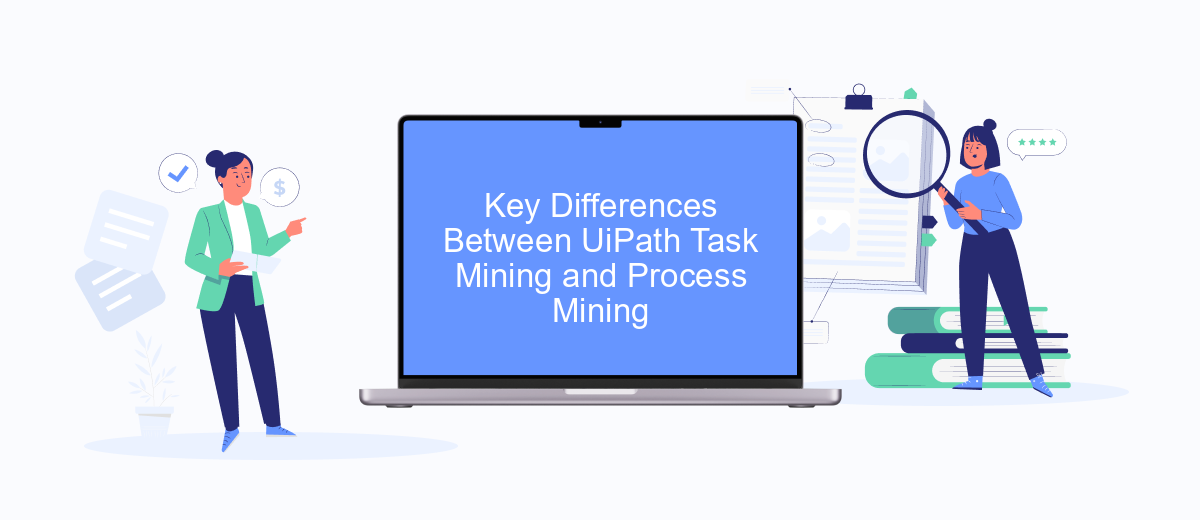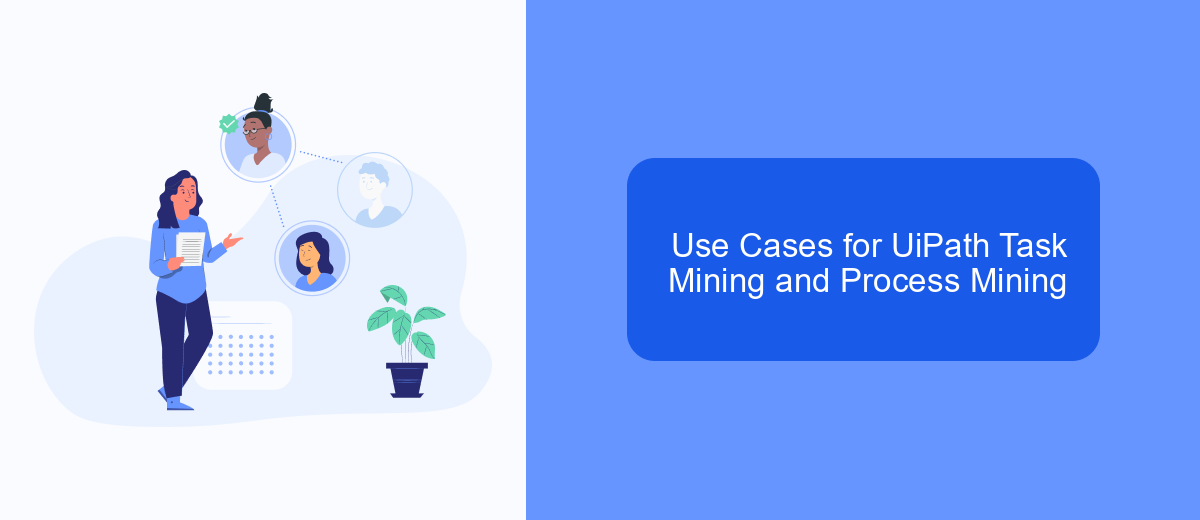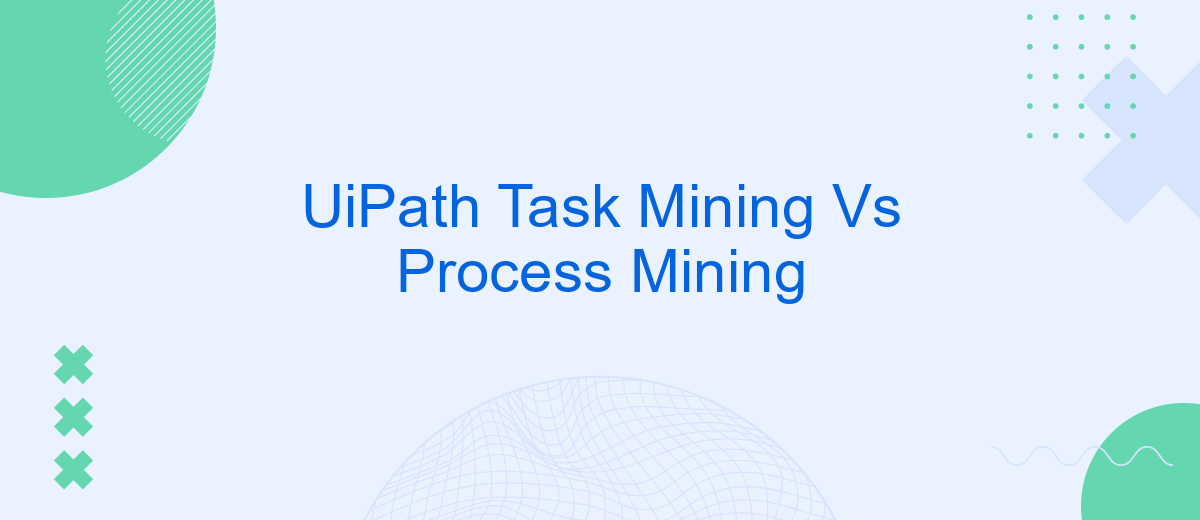In the rapidly evolving landscape of business automation, understanding the nuances between UiPath Task Mining and Process Mining is crucial for optimizing workflows. While both technologies aim to enhance efficiency, they operate at different levels of granularity. This article delves into the key differences, benefits, and use cases of UiPath Task Mining and Process Mining, helping you make informed decisions for your organization.
UiPath Task Mining vs Process Mining: An Overview
UiPath Task Mining and Process Mining are two powerful tools designed to enhance business process automation, yet they serve distinct purposes. Task Mining focuses on capturing and analyzing user interactions with software applications to understand how tasks are performed at the micro level. In contrast, Process Mining utilizes event logs from IT systems to provide a macro view of how business processes operate and identify inefficiencies.
- Task Mining: Captures user interactions, provides detailed task-level insights, and helps identify automation opportunities.
- Process Mining: Analyzes event logs, offers a high-level overview of business processes, and identifies bottlenecks and inefficiencies.
While both methods aim to optimize workflows, they complement each other by offering different perspectives. Task Mining is ideal for understanding the granular details of user tasks, whereas Process Mining excels in giving a broader view of process performance. For seamless integration and data synchronization between these tools, services like SaveMyLeads can be invaluable, ensuring that insights are efficiently translated into actionable automation strategies.
Benefits of Task Mining and Process Mining

Task Mining and Process Mining offer distinct benefits that can significantly enhance business operations. Task Mining focuses on capturing and analyzing user interactions with various software applications, providing granular insights into how tasks are performed. This level of detail helps organizations identify inefficiencies, streamline workflows, and improve employee productivity. By leveraging tools like SaveMyLeads, companies can automate the integration of data from different applications, further optimizing the task execution process.
On the other hand, Process Mining provides a broader view by analyzing event logs from enterprise systems to map out end-to-end processes. This holistic perspective enables organizations to pinpoint bottlenecks, ensure compliance, and enhance overall process efficiency. The combination of Task Mining and Process Mining allows for a comprehensive understanding of both micro and macro-level operations, empowering businesses to make data-driven decisions and achieve operational excellence.
Key Differences Between UiPath Task Mining and Process Mining

UiPath Task Mining and Process Mining are both essential tools for understanding and optimizing business processes, but they serve different purposes and operate in distinct ways.
- Focus: Task Mining focuses on capturing and analyzing user interactions at the desktop level, while Process Mining examines end-to-end business processes by analyzing event logs from various IT systems.
- Data Sources: Task Mining collects data directly from user activities and interactions, whereas Process Mining relies on data from enterprise systems like ERP, CRM, and other databases.
- Granularity: Task Mining provides a detailed view of individual tasks and user actions, offering granular insights. Process Mining, on the other hand, provides a broader view of the overall process flow and performance.
- Use Cases: Task Mining is ideal for identifying inefficiencies in repetitive tasks and optimizing user workflows. Process Mining is used for analyzing and improving complex business processes across the organization.
Both tools can be integrated into existing systems using services like SaveMyLeads, which facilitates seamless data integration and automation, enhancing the efficiency and effectiveness of both Task and Process Mining initiatives.
Use Cases for UiPath Task Mining and Process Mining

UiPath Task Mining and Process Mining serve distinct yet complementary purposes in optimizing business processes. Task Mining focuses on capturing and analyzing the detailed steps employees take to complete tasks on their computers. This granular data helps identify inefficiencies and areas for automation. On the other hand, Process Mining analyzes event logs from IT systems to provide a high-level overview of entire business processes, identifying bottlenecks and opportunities for improvement.
Both technologies have specific use cases that can significantly enhance operational efficiency. Task Mining is particularly useful for understanding and streamlining repetitive tasks, while Process Mining excels in mapping out complex processes across multiple systems.
- Task Mining: Identifying repetitive tasks for automation
- Task Mining: Analyzing user interactions for productivity improvements
- Process Mining: Mapping end-to-end processes for optimization
- Process Mining: Detecting process bottlenecks and inefficiencies
Integrating these tools with services like SaveMyLeads can further enhance their capabilities. SaveMyLeads automates the transfer of data between various applications, ensuring seamless integration and more comprehensive data for analysis. This combination allows businesses to achieve a higher level of operational efficiency and informed decision-making.
Conclusion
In conclusion, both UiPath Task Mining and Process Mining offer valuable insights into organizational workflows, though they serve different purposes. Task Mining focuses on the granular level of individual tasks, capturing user interactions to identify inefficiencies and areas for improvement. On the other hand, Process Mining provides a broader view, analyzing end-to-end processes to uncover bottlenecks and optimize overall performance.
Integrating these two approaches can significantly enhance an organization's ability to streamline operations and boost productivity. Services like SaveMyLeads can further support this integration by automating data transfer and synchronization between various platforms, ensuring that insights from Task and Process Mining are effectively utilized. By leveraging both technologies and supporting services, organizations can achieve a comprehensive understanding of their workflows and drive continuous improvement.
- Automate the work with leads from the Facebook advertising account
- Empower with integrations and instant transfer of leads
- Don't spend money on developers or integrators
- Save time by automating routine tasks
FAQ
What is the difference between UiPath Task Mining and Process Mining?
How does Task Mining contribute to automation?
Can Task Mining and Process Mining be used together?
What tools are available for integrating automation solutions identified by Task Mining?
How does Process Mining improve business processes?
Would you like your employees to receive real-time data on new Facebook leads, and automatically send a welcome email or SMS to users who have responded to your social media ad? All this and more can be implemented using the SaveMyLeads system. Connect the necessary services to your Facebook advertising account and automate data transfer and routine work. Let your employees focus on what really matters, rather than wasting time manually transferring data or sending out template emails.

